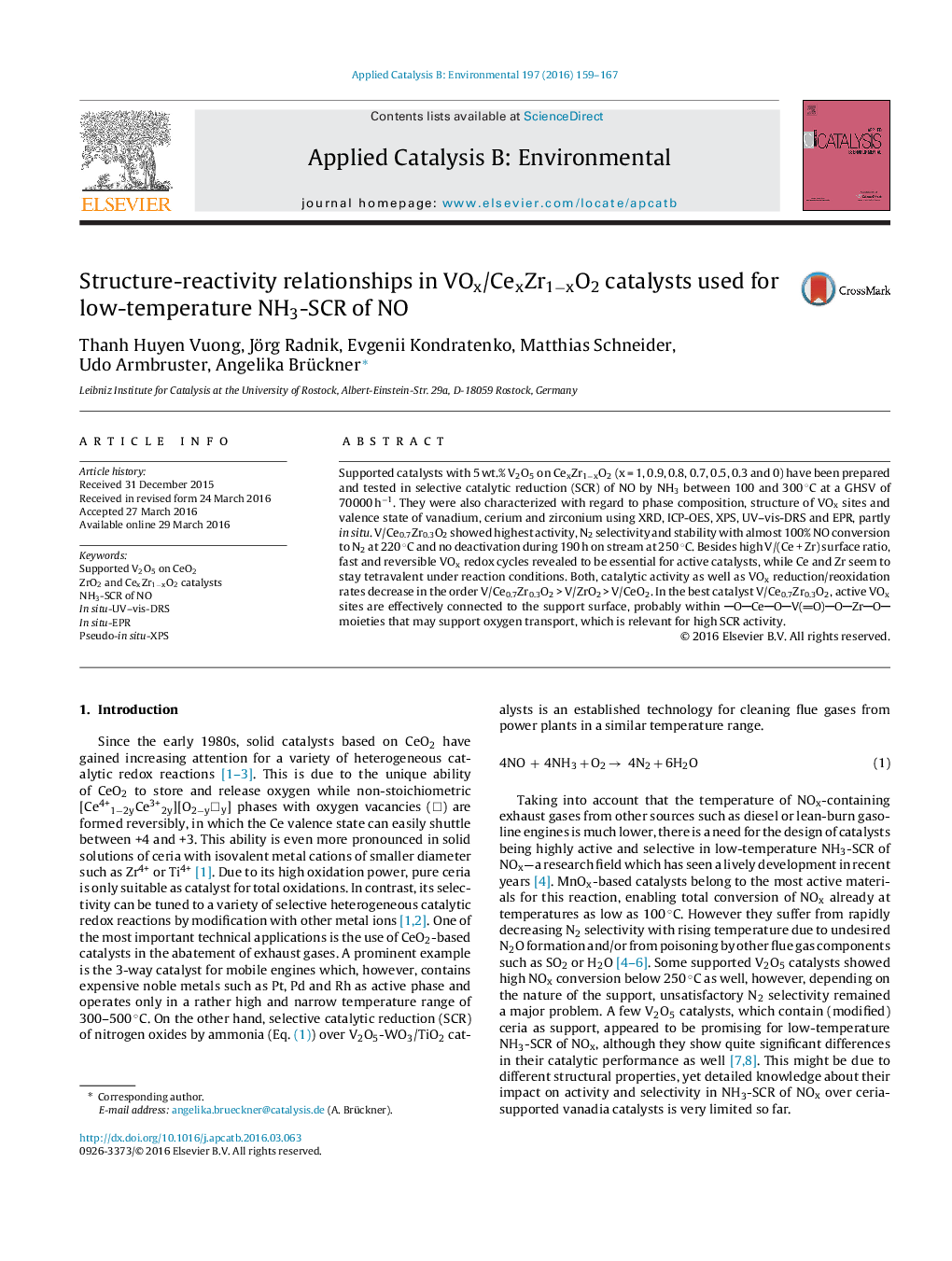| Article ID | Journal | Published Year | Pages | File Type |
|---|---|---|---|---|
| 45507 | Applied Catalysis B: Environmental | 2016 | 9 Pages |
•5% V2O5/CexZr1−xO2 catalyze NH3-SCR of NO with highest GHSV at T ≤ 200 °C.•Most active sites are OCeOV(O)OZrO surface moieties.•V5+/V4+ and/or V4+/V3+ but no Ce4+/Ce3+ redox cycles are passed.
Supported catalysts with 5 wt.% V2O5 on CexZr1−xO2 (x = 1, 0.9, 0.8, 0.7, 0.5, 0.3 and 0) have been prepared and tested in selective catalytic reduction (SCR) of NO by NH3 between 100 and 300 °C at a GHSV of 70000 h−1. They were also characterized with regard to phase composition, structure of VOx sites and valence state of vanadium, cerium and zirconium using XRD, ICP-OES, XPS, UV–vis-DRS and EPR, partly in situ. V/Ce0.7Zr0.3O2 showed highest activity, N2 selectivity and stability with almost 100% NO conversion to N2 at 220 °C and no deactivation during 190 h on stream at 250 °C. Besides high V/(Ce + Zr) surface ratio, fast and reversible VOx redox cycles revealed to be essential for active catalysts, while Ce and Zr seem to stay tetravalent under reaction conditions. Both, catalytic activity as well as VOx reduction/reoxidation rates decrease in the order V/Ce0.7Zr0.3O2 > V/ZrO2 > V/CeO2. In the best catalyst V/Ce0.7Zr0.3O2, active VOx sites are effectively connected to the support surface, probably within OCeOV(O)OZrO moieties that may support oxygen transport, which is relevant for high SCR activity.
Graphical abstractFigure optionsDownload full-size imageDownload as PowerPoint slide
